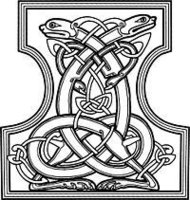Categories Online-Shop Ancient Coins Greek Coins Celts
Celts

The first recorded use of the name of Celts – as Κελτοί (Keltoi) – to refer to an ethnic group was by Hecataeus of Miletus, the Greek geographer, in 517 BC, when writing about a people living near Massilia (modern Marseille). In the 5th century BC Herodotus referred to Keltoi living around the head of the Danube and also in the far west of Europe.
The etymology of the term Keltoi is unclear. Possible roots include Indo-European *kʲel-‘to hide’ (also in Old Irish celid), IE *kʲel- ‘to heat’ or *kel- ‘to impel’. Several authors have supposed it to be Celtic in origin, while others view it as a name coined by Greeks. Many linguists fall in the latter group, and suggest the meaning “the tall ones” as a description of the tall men and women of the celtic tribes.
Since the 1st century BC the Celts lived increasingly in cities, which grew accordingly into economic centers. So the coinage was a crucial factor for the attaching of a general value to goods without major problems. The Celtic coins are clearly based on the already established types of the Greeks and Romans and used the given coin systems with their small silver coins. Despite these dependencies, the coin designs are astonishingly independent and show stylized and abstract forms, their own alphabet and their own legends.
|
Product no.: 319074
Celts, Southern Gaul, tribe of the Volcae Tectosages, ~ 50 AD, AR Drachm Obv.: Of varying types Rev.: Of varying types |
Old price 120.00 €
89.00 €
*
In stock |
|
|
|
|
Product no.: 463060_1
Celts, Germania, Middle Rhine area, Hesse and Rhineland-Palatinate |
5,900.00 €
*
In stock |
|
|
|
|
Product no.: 463060_2
Celts, Germania, Middle Rhine area, Hesse and Rhineland-Palatinate |
5,900.00 €
*
In stock |
|
|
|





